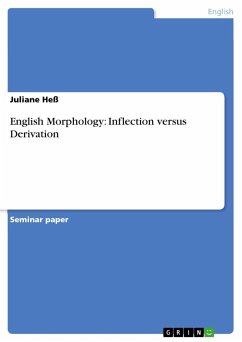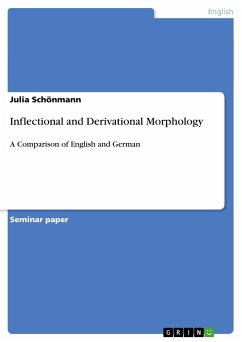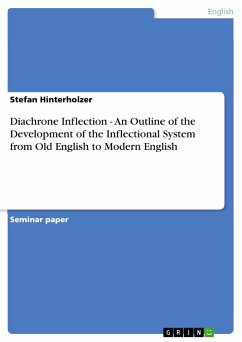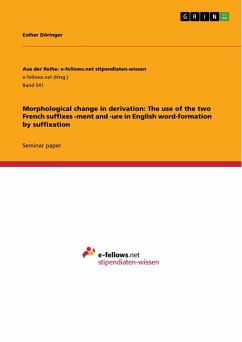Seminar paper from the year 2010 in the subject English Language and Literature Studies - Linguistics, grade: 1,7, Christian-Albrechts-University of Kiel (Englisches Seminar), language: English, abstract: Inflection and derivation are traditional concepts in the field of morphology, the subdiscipline of linguistics that concentrates on the internal structures of words. Despite the ascribed central role in linguistics, the distinction between inflection and derivation is far from clear-cut. Linguistic textbooks or publications used to treat the fields of inflectional and derivational morphology as two clearly distinguishable categories but on closer examination the boundaries between both processes turn out to be a lot fuzzier. "The question of how inflection can be distinguished from derivation is one of the classical problems addressed by structuralist linguistics." . During the last decades many linguists have already focussed on this lack of clear distinctions with the aim to find a universally valid definition for both categories, but the concepts of inflectional and derivational morphology "are notoriously easier to illustrate than to define."2 We will first turn towards a broad selection of criteria that have been argued to distinguish inflection and derivation. These criteria have been proposed to put the dichotomy on a firmer theoretical footing which is important since much morphological theorising is based on the assumption that morphological processes fall into these two broad categories - inflection and derivation.








